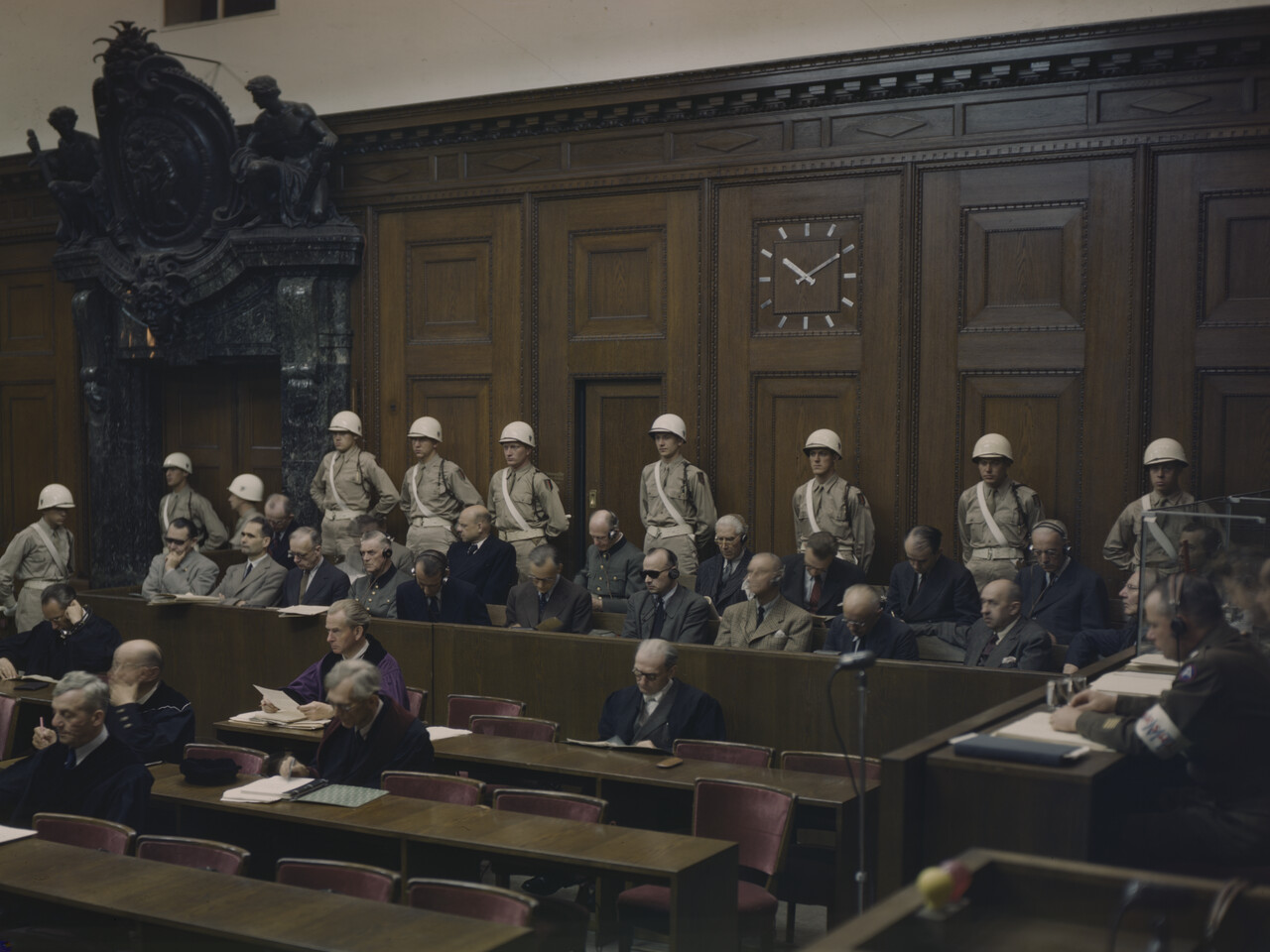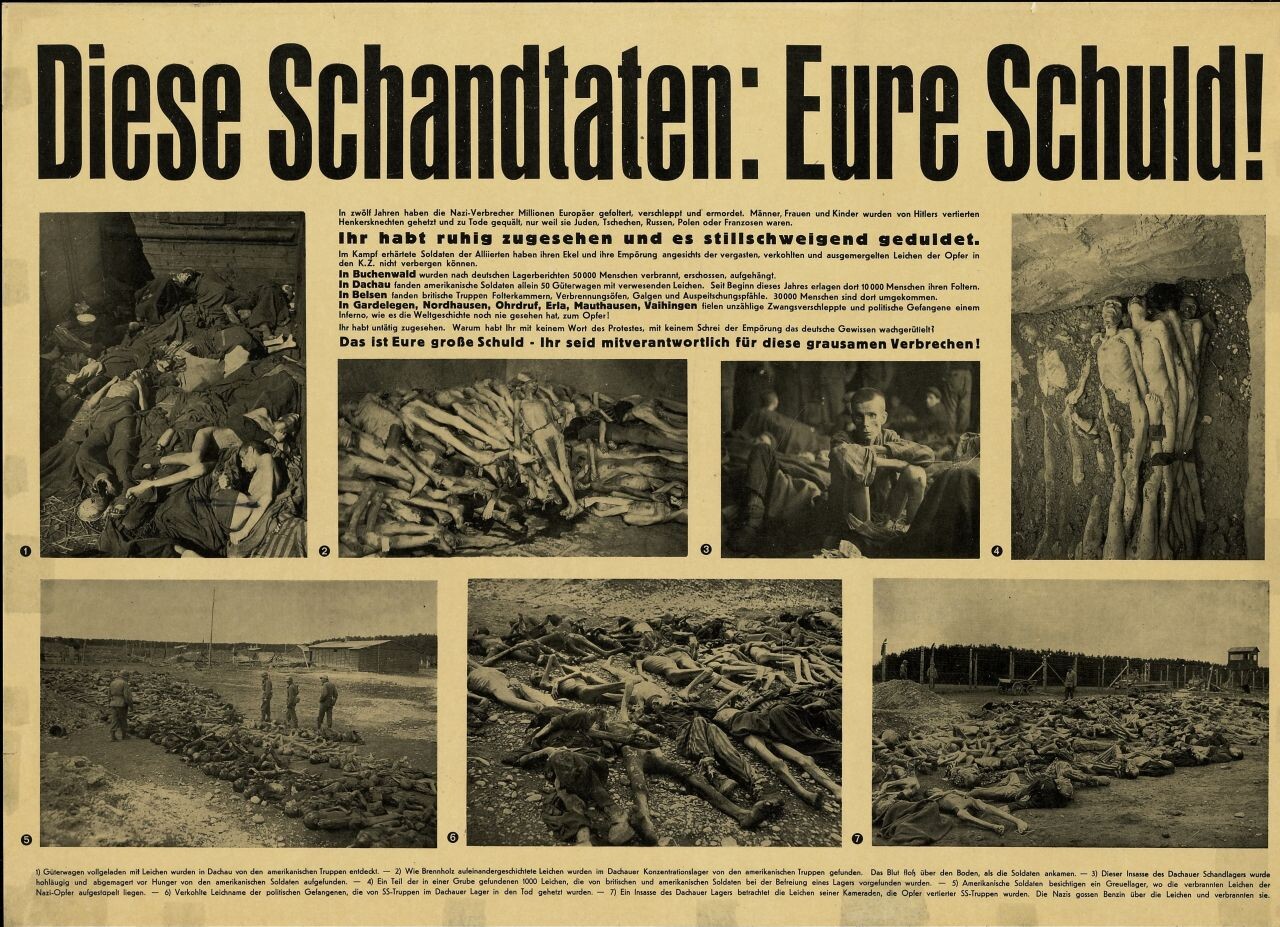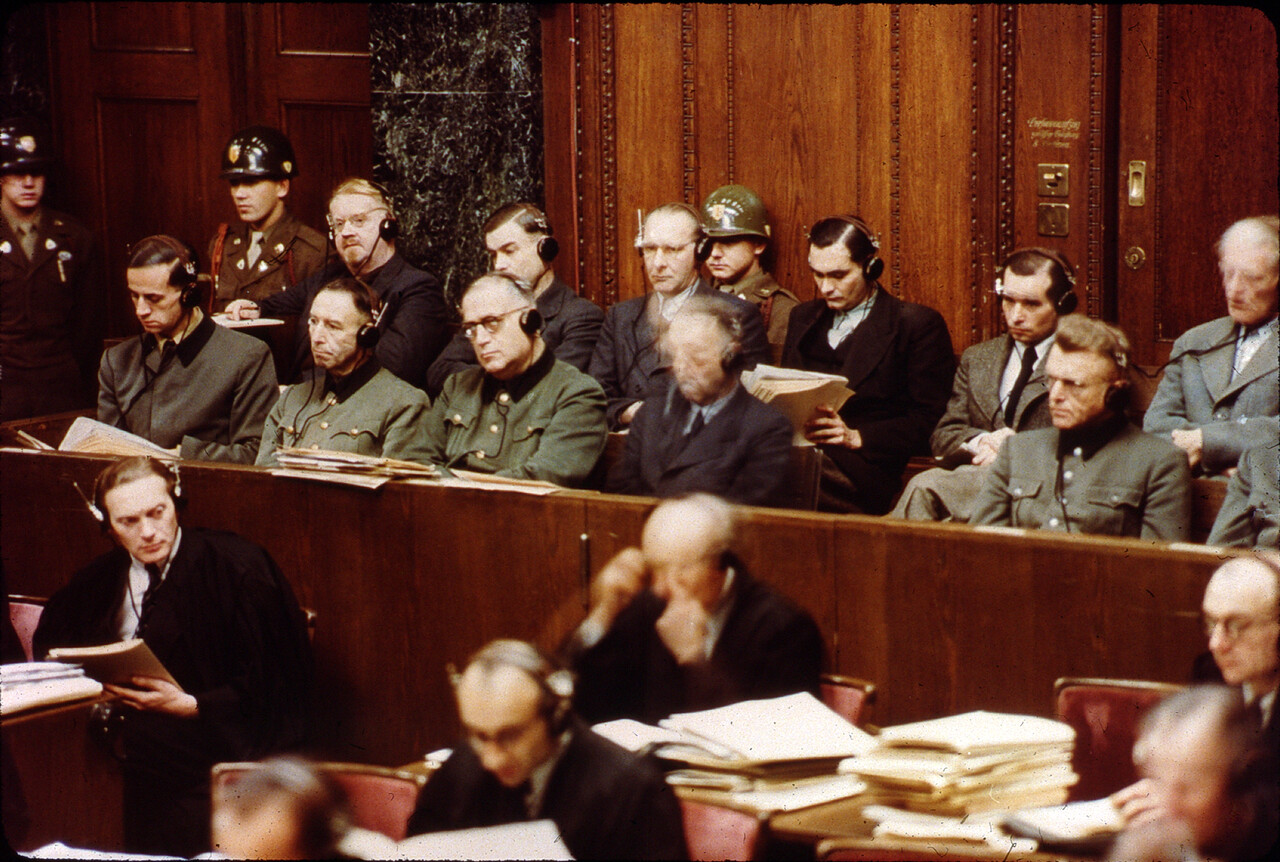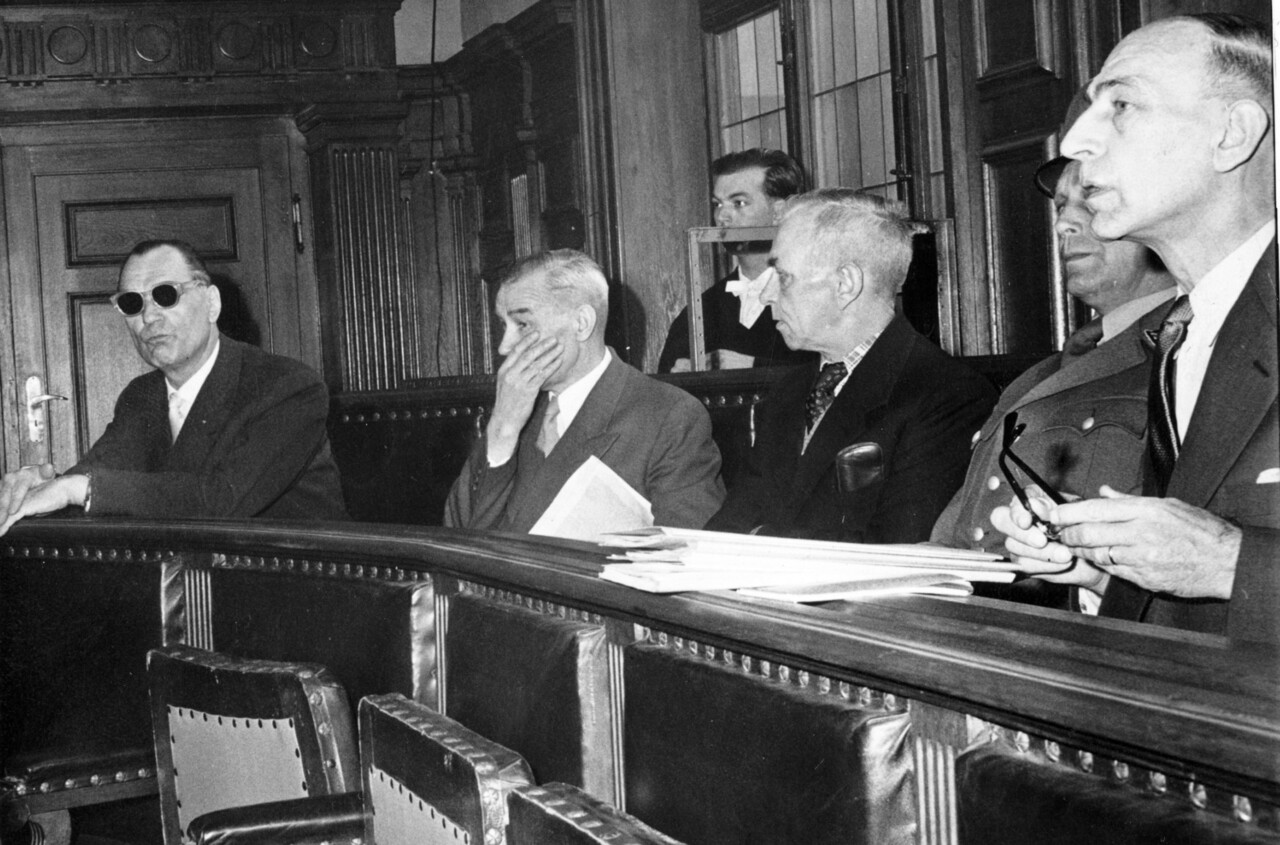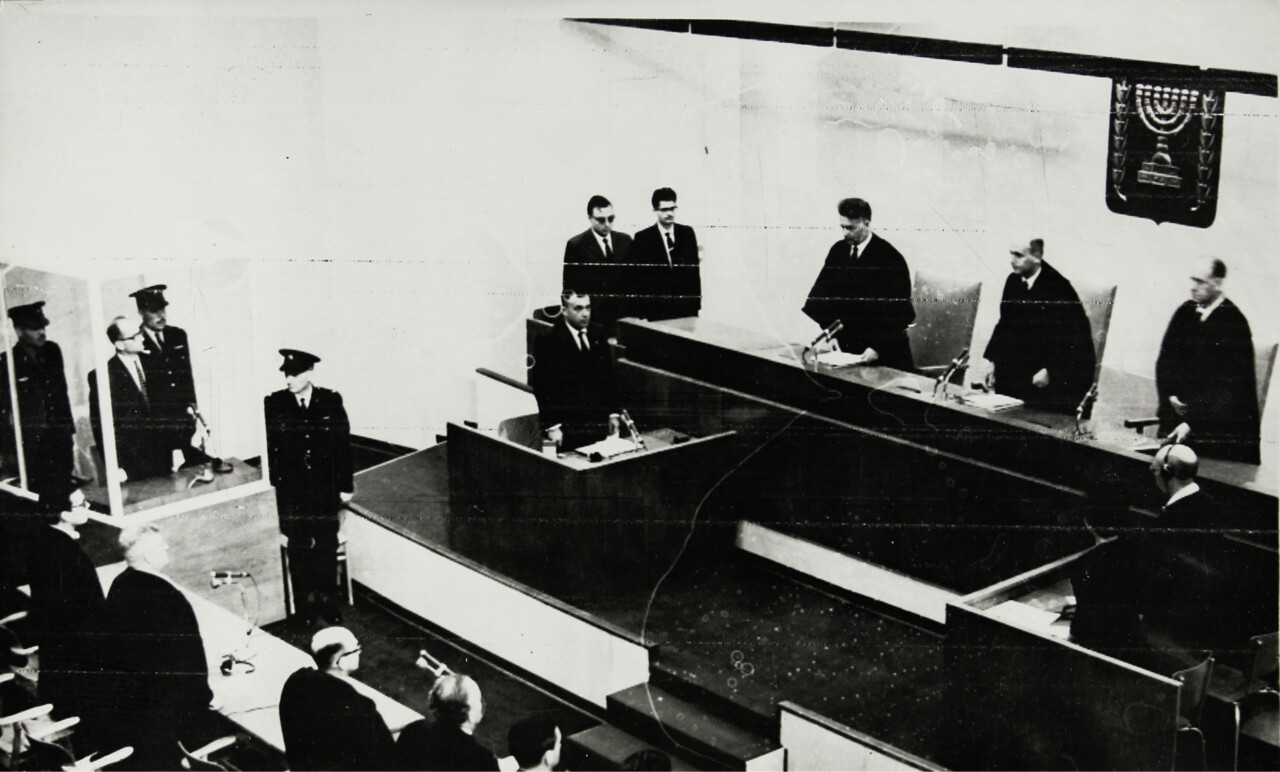The Nuremberg Trials and the efforts to prosecute perpetrators
The German occupation of Europe during the Second World War was based on a massive system of camps, enslavement and mass murder. Even during the war, the Allies made it clear that they intended to punish the guilty. In August 1945, the Soviet Union, the United States, France and the United Kingdom signed a statute that provided the international legal basis for an International Military Tribunal. The aim was to punish the wrongs committed in the form of »crimes against peace«, »crimes against humanity« and »war crimes«. The main war crimes trial was held in Nuremberg from 20 November 1945 to 1 October 1946. The accused pleaded »not guilty«,as the crimes they were accused of committing were not punishable under German Law. However, the Tribunal found that the crimes should be outlawed under customary international law and sentenced twelve of the 22 defendants to death. Further trials and subsequent executions took place in Poland and the Soviet Union. However, most of the perpetrators and accomplices of the German war of annihilation were never brought to justice.
Nuremberg, 1945/46: Defendants before the International Military Tribunal in the jury courtroom (Room 600) of the courthouse on Fürther Strasse; front row, from left: Hermann Göring (1893 – 1946), Rudolf Hess (1894 – 1987), Joachim von Ribbentrop (1893 – 1946), Wilhelm Keitel (1882 – 1946), Ernst Kaltenbrunner (1903 – 1946), Alfred Rosenberg (1893 – 1946), Hans Frank (1900 – 1946) and their lawyers. Photograph by the American army photographer Ray D'Addario (1920 – 2011).
Stadtarchiv Nürnberg, A 65/II Nr. A65-II-RA-137-D
American Military Administration poster, 1945: The Western Allies saw democratisation as the only way to dissuade Germans from National Socialism. In the first phase of the re-education policy, they rose the question of complicity and guilt. The Soviets soon began to attribute responsibility for the crimes to a small group of »fascists« and »monopoly capitalists«. This was an attempt to promote their »anti-fascist« system of rule.
Stiftung Haus der Geschichte der Bundesrepublik Deutschland / Office of Military Government
Nuremberg Doctors' Trial from 9 December 1946 to 20 August 1947: dock with Karl Brandt (1904 – 1948, front row, 1st from left) and Viktor Brack (1904 – 1948, back row, 3rd from left). The main war crimes trial was the basis for further trials, including those against doctors who were responsible for the »euthanasia« programme. Between 1939 and 1945, the National Socialists murdered around 300,000 patients and people in need of care in Germany and the occupied territories.
Stadtarchiv Nürnberg, A65-II-RA-216-KD
Ulm, 1958: Defendants in the Einsatzgruppen trial, from left: Bernhard Fischer-Schweder (1904 – 1960), Prãnas Lukys alias Jakys (1900 – ?), Harm Willms Harms (1892 – 1974) and Werner Hersmann (1904 – 1972). For the first time in the Federal Republic of Germany, the shootings of Jews in occupied Eastern Europe were prosecuted in a public trial. The court only convicted the defendants of »accessory to joint murder«, although they were responsible for the killing of over 5,500 Lithuanian Jews in the summer of 1941.
Helmut Sander / SDZ
Jerusalem, 11 April to 15 December 1961: Trial of Adolf Eichmann (1906 – 1962), former SS Obersturmbannführer and Head of Department 4 (»Jewish and Evacuation Affairs«) of the Reich Security Main Office in Berlin. He was responsible for the overall organisation and coordination of the deportation of Jews from Germany and occupied European countries. The court held him responsible for the murder of millions of Jewish children, women and men. The sentence is death by hanging.
Ullstein Bild, 04901142
